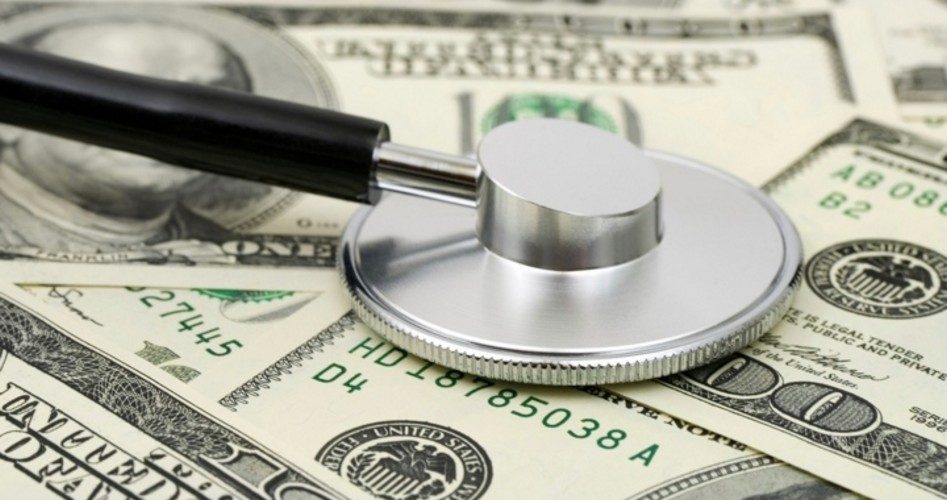
A new study published by the Health Care Cost Institute (HCCI) could proffer a formidable challenge to the Obama administration’s regulated approach to tapering healthcare costs, as the analysis found that healthcare spending is growing moderately, up 3.3 percent in 2010 but still three times the pace of general price inflation.
The HHCI examined four of the country’s largest health insurers — Humana, Aetna, United Healthcare, and Kaiser Permanente — which provided a catalog of records that address healthcare spending among Americans under age 65. The study reviewed three billion claims for individuals with employer-sponsored insurance in a one-year period.
Surprisingly, the spending hike was not attributed to an increase in unnecessary procedures and treatments; instead, the increased costs were spurred by the medical services themselves — including professional procedures, prescription drugs, and inpatient and outpatient facilities — becoming more expensive. “People weren’t getting more care, but people [were] paying more for it,” asserted HCCI Chairman Martin Gaynor.
The HHCI is a new independent organization dedicated to “creating the nation’s most comprehensive source of information on health care costs and utilization, and promoting research on the drivers of escalating health care costs and utilization in the U.S.” The group’s new project reportedly compiles one of the most comprehensive sets of data ever amassed on healthcare spending by individuals with private insurance.
“It’s the first time that this data has ever been assembled like this,” asserts Mr. Gaynor, adding that HHCI researchers “have been working like crazy to make this happen.” Among the study’s key findings are:
Cost Sharing. Out-of-pocket per capita spending increased 7.1 percent in 2010 to $689. Cost sharing rates between payers and beneficiaries remained relatively stable, with beneficiaries contributing 16.2 percent of average per capita spending.
Inpatient-Outpatient Facility Trends. The average facility price paid for a hospital stay was $14,662 in 2010, a 5.1 percent increase over 2009. The price for an emergency room visit climbed to $1,327 in 2010, an 11 percent hike. The average out-of-pocket price of a hospital stay rose 10.7 percent from $632 in 2009 to $700 in 2010.
Prescription Drugs. Prescription drug prices grew on 3 percent overall from an average of $80 per prescription in 2009 to $82 in 2010. However, brand name drug prices increased 13 percent from 2009 to 2010, while generic drug prices decreased by 6.3 percent.
Professional Services. The overall price of professional procedures that include doctor visits, lab tests, and diagnostic imaging, increased 2.6 percent. Payments for office visits — to both primary care and specialist providers — grew by more than 5 percent.
Utilization Trends. Overall use of health care services declined in 2010. Usage dropped by more than 5 percent for medical inpatient admissions, emergency room visits, primary care provider office visits, and radiology procedures. On average, each insured person filled more than nine prescriptions in 2010. The number of brand name prescriptions dropped by nearly 4 percent, while the number of generic prescriptions increased by 2.5 percent.
“The story really does seem to be prices,” Gaynor affirmed. The data indicates that individuals with employer-sponsored insurance “are paying more and getting less,” suggests Chapin White, a researcher at the nonpartisan Center for Studying Health System Change. Hospitals and other health professionals “just seem to be able to raise prices faster than general inflation,” he added.
The new research will likely boost experts’ knowledge and understanding of what ignites certain fluctuations in medical costs, since much of the current data is extracted from Medicare — which discloses its claims data but does not provide much information on how younger people use medical care or about costs associated with the private market. Future reports by the research institute will examine cost and utilization trends in more specialized areas, such as cancer, diabetes, mental health, and substance abuse.
Of course, the introduction of such data draws a range of conclusions, as healthcare critics offer their own “solutions” to the tumultuous spike in medical spending. Based on the study’s conclusions, rising healthcare spending in 2010 was not prompted by Americans using more medicine, but the increased costs that hospitals and other medical providers were charging for their services.
So what’s driving up costs? While there’s no one stimulant, the development of a third-party-payer system has nearly eliminated the market forces that consumerism drives. Government regulations and skewed tax incentives — not to mention, the entitlement ideology that says health insurance is a basic human right — has generated an artificial insurance market dominated by employer-sponsored coverage.
Such a market has left consumers in the dark about how much money medical providers are charging for their services, because their insurer automatically covers the bill. Consequently, doctors and hospitals have extraordinary pricing power, and are now boosting prices to unprecedented levels.
The government’s increasing role in the healthcare system has also driven up prices, as government spending in medical care continues to skyrocket. Dustin Chambers, writing for The American Enterprise Institute’s online magazine, noted that the U.S. healthcare system is in grave danger because policymakers have consistently avoided market-oriented solutions and instead enacted policies based on public finance and intrusive regulations:
Historically, each crisis has brought its own government solution, which in time has given rise to new problems necessitating still more government intervention. This all began in 1944, when employers began offering health insurance and other benefits to attract prospective employees because government wage and price controls prevented the payment of higher cash wages. Thus government regulation had the unintended consequence of giving rise to the current system of employer-provided health benefits. In the mid-1960s, President Johnson’s “Great Society” gave us Medicare and Medicaid, which insured millions of senior citizens and in the process drove up the cost of medical care due in part to the third-party payment problems discussed above. In response to high prescription drug costs, President George W. Bush gave us an oddly designed Medicare prescription drug coverage benefit (Medicare Part D). Apart from being excessively complicated, the plan is a great example of the misuse of insurance — Medicare Part D should cover catastrophic drug expenses, not mundane drugs such as Viagra.
In sum, as new perceived crises occur, the snap reaction is to promote more government involvement, when in fact, less government is the only effective solution.



